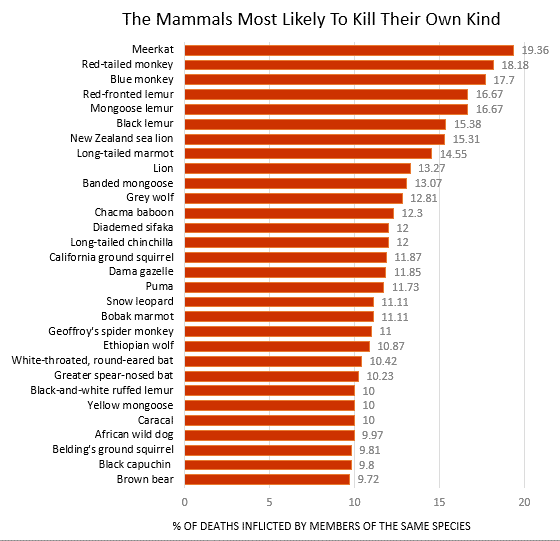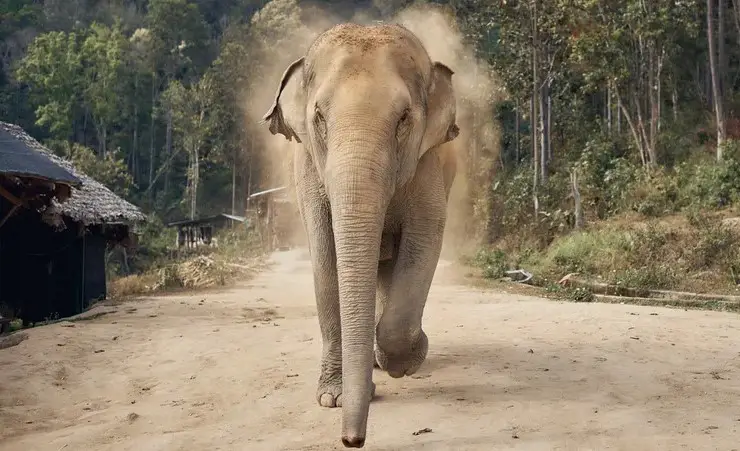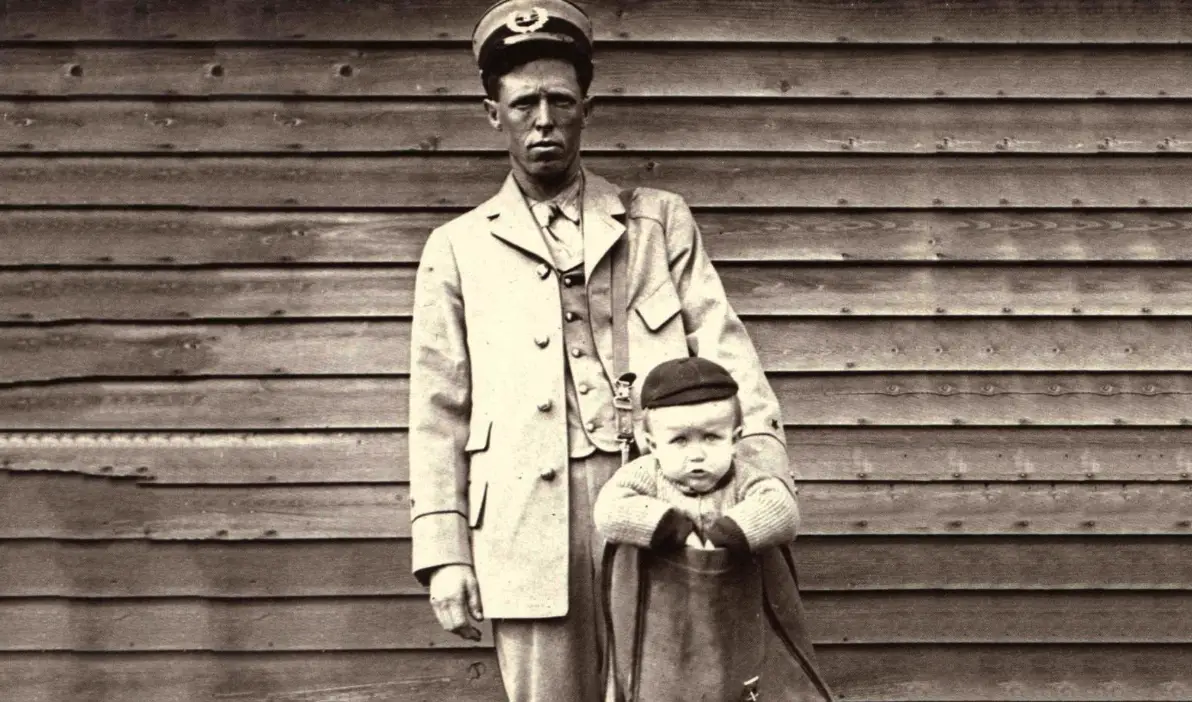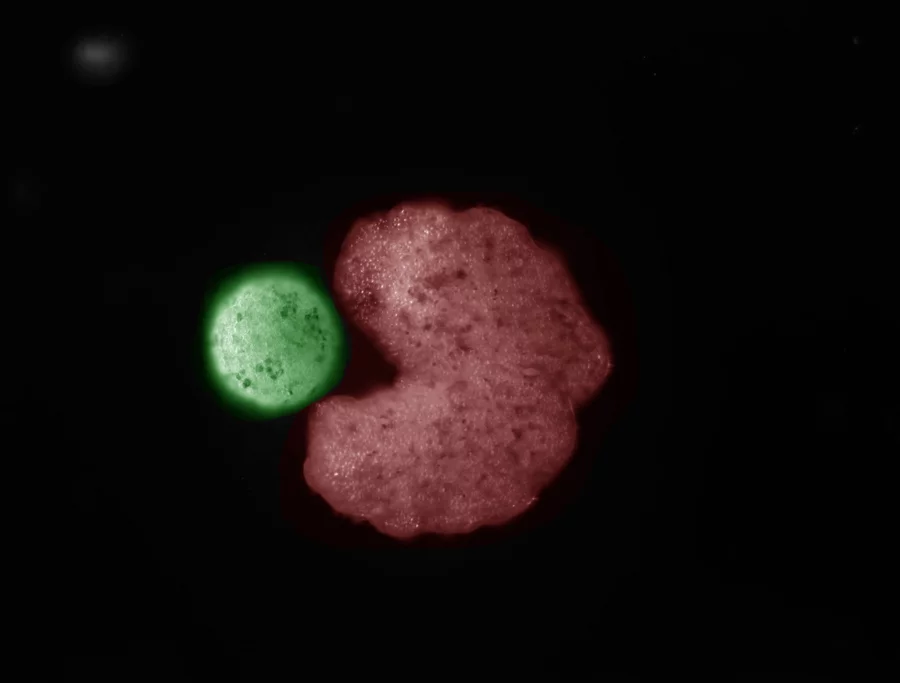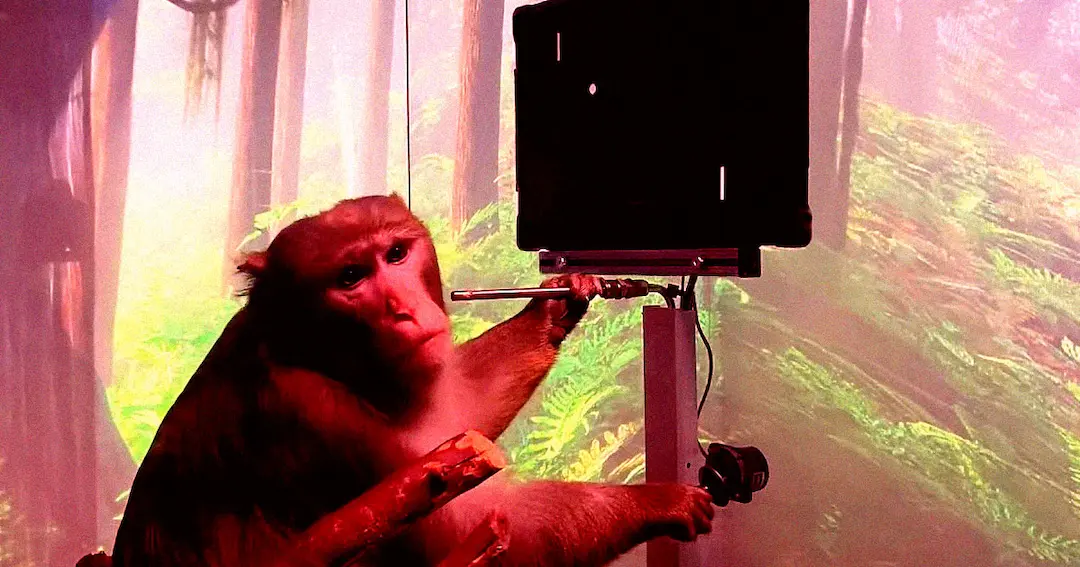Meerkats: Most Murderous Mammal who Kills Their Own Kind (1 in 5 die at the paws of their own)
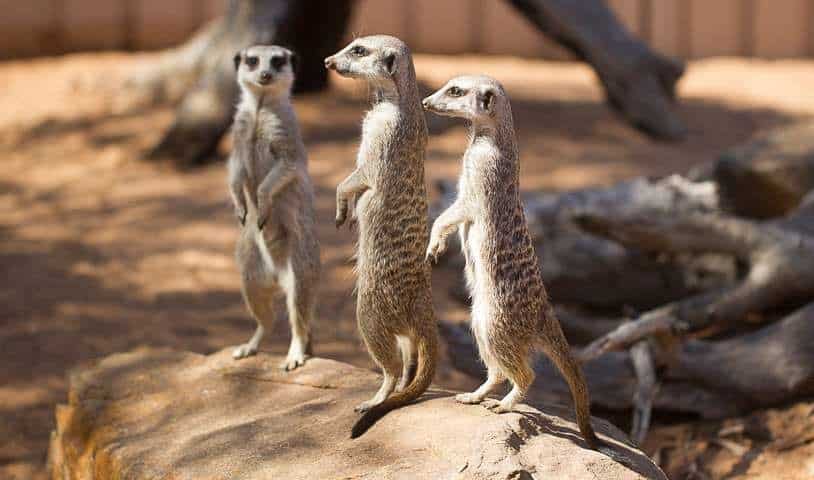
- Meerkats hold the grim record for highest intraspecific mortality among over 1,000 mammal species studied, with 19.4% of deaths caused by fellow meerkats.
- Dominant females ruthlessly enforce breeding rights through infanticide, targeting pups of subordinates to eliminate competition for resources.
- Beneath their cooperative facade in the harsh Kalahari Desert, meerkat mobs operate under a strict matriarchal hierarchy that fuels ongoing violence.
In the sun-scorched expanses of southern Africa’s Kalahari Desert, where temperatures soar above 100 degrees Fahrenheit and water sources vanish for months, a band of small, upright figures scans the horizon.
These are meerkats, the charismatic mongooses often celebrated in wildlife documentaries for their endearing sentinel poses and tight-knit family bonds.
But what if the very traits that make them seem like nature’s perfect team players—vigilant cooperation and communal pup-rearing—hide a far more sinister reality?
As researchers delve deeper into their behavior, a chilling pattern emerges, one that challenges our perceptions of these desert dwellers and raises questions about the thin line between survival and savagery in the animal kingdom.
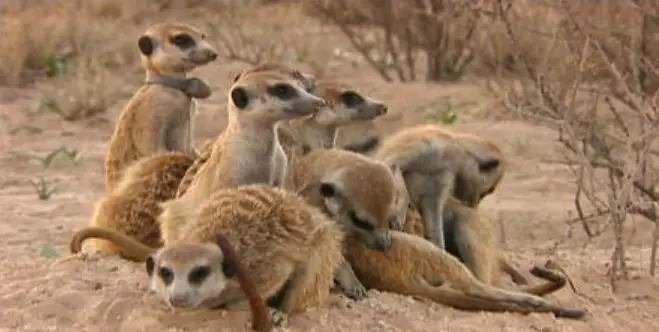
Meerkats, scientifically known as Suricata suricatta, are not your typical predators.
Weighing just about 2 pounds and standing roughly a foot tall, they thrive in arid landscapes stretching across Botswana, Namibia, and South Africa.
Their diet consists primarily of insects, scorpions, spiders, and small vertebrates, scavenged during foraging expeditions that can last up to eight hours a day.
To cope with the extreme conditions, meerkats have evolved remarkable adaptations: dark patches around their eyes reduce glare like built-in sunglasses, and they can close their ears to keep sand out while digging burrows that extend up to 6 feet underground.
These warrens, with multiple entrances and chambers, serve as shelters from predators like martial eagles and jackals, but they also become battlegrounds for internal conflicts that few outsiders witness.
At the heart of meerkat society lies a complex social structure that blends altruism with aggression.
Groups, called mobs or clans, typically number between 20 and 50 individuals, all descended from a single dominant pair.
The alpha female reigns supreme, monopolizing up to 80% of the breeding opportunities within the mob.
She achieves this through a combination of physiological suppression and outright violence, secreting hormones that inhibit ovulation in subordinate females during her pregnancy.
But when subordinates do manage to conceive—often during brief windows of opportunity—the consequences can be deadly.
Why would a creature so reliant on group harmony turn to such brutality?
The answer lies in the relentless pressure of resource scarcity in their habitat, where every pup represents a drain on limited food and caregiving efforts.
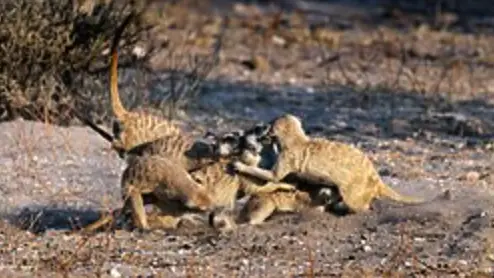
Infanticide, the deliberate killing of young, stands out as the primary driver of this violence.
Pregnant dominant females will raid the burrows of subordinates, dragging out and slaughtering newborns to ensure her own litter faces no rivals.
This behavior isn’t random; it’s a calculated strategy to maintain control.
In one documented case from long-term field observations in the Kalahari, a subordinate female’s pups were killed within hours of birth, allowing the alpha to redirect the group’s babysitting duties toward her offspring.
Subordinates, too, aren’t innocent bystanders—they may commit infanticide against the dominant’s pups if they sense an opening to ascend the hierarchy, though such acts often lead to eviction or death.
These evictions are brutal affairs: the alpha and her allies chase the offender from the mob, leaving them vulnerable to starvation or attacks from rival groups.
Territorial disputes between mobs add another layer of peril, with clashes over prime foraging grounds resulting in fatal wounds from sharp claws and teeth.
What pushes these acts beyond mere survival instinct into the realm of calculated homicide?
Evolutionary biologists point to the high stakes of reproduction in a environment where infant mortality from external threats already hovers around 50%.
By eliminating competitors’ offspring, the dominant female boosts her genetic legacy, a tactic seen in other social mammals but amplified in meerkats due to their intense group dynamics.
Vocalizations play a role here, too—meerkats use at least 10 distinct calls, from alarm barks warning of aerial predators to soft contact murmurs during foraging.
Yet these same communication tools can signal aggression, with growls escalating into fights that leave lasting scars.
| Key Fact | Detail |
|---|---|
| Scientific Name | Suricata suricatta |
| Habitat Range | Kalahari and Namib Deserts in Botswana, Namibia, South Africa |
| Average Group Size | 20-50 individuals |
| Diet Composition | Insects (70%), scorpions, spiders, small reptiles, eggs |
| Intraspecific Mortality Rate | 19.4% of deaths caused by other meerkats |
| Dominant Female Breeding Share | Up to 80% of pups in the mob |
| Burrow Depth | Up to 6 feet with multiple chambers |
| Foraging Time | 5-8 hours daily |
| Vocalizations | At least 10 types, including alarms and contact calls |
| Adaptation Example | Eye patches reduce sun glare; can derive water from prey |
As field studies accumulate, the scale of this internal warfare becomes staggering.
A groundbreaking phylogenetic analysis examining over 1,024 mammal species revealed meerkats as the undisputed leaders in conspecific killing, with nearly one in five deaths attributed to their own kind.
This rate dwarfs that of notorious carnivores like lions at 13.3% or gray wolves at 12.8%, and even outpaces primates such as chacma baboons at 12.3%.
Surprisingly, seemingly docile herbivores like long-tailed marmots (14.5%) and California ground squirrels (11.9%) also rank high, suggesting that social density and competition for mates or territory fuel such behaviors across taxa.
In contrast, species like zebras and Thomson’s gazelles report zero intraspecific fatalities, their open plains lifestyles minimizing deadly encounters.
Delving into the motivations, researchers have linked meerkat infanticide to wet-nursing dynamics, where evicted or subordinate females are sometimes forced to lactate and feed the dominant’s pups as a form of enslavement.
This coerced allomothering—where non-parents help raise young—ensures the alpha’s litter survives, but at the cost of the subordinates’ reproductive freedom.
Hormonal cues play a pivotal role; estrogen levels in lower-ranking females fluctuate with the perceived threat of infanticide, effectively self-suppressing fertility to avoid conflict.
Such physiological restraint underscores how fear permeates the mob’s daily life, turning what appears as harmonious sunbathing sessions—where meerkats stand belly-up to absorb heat—into tense standoffs.
WATCH!
Beyond the violence, meerkats exhibit ingenious survival strategies that hint at their intelligence.
Sentinels rotate duties, perching on termite mounds or rocks to watch for threats while the group feeds, allowing foragers to space out 3-15 feet apart without losing contact.
Pups learn scorpion-handling techniques from adults, who present disabled prey for practice, building skills essential in a venom-rich environment.
These behaviors, observed in multi-year projects like the Kalahari Meerkat Project, reveal a society where cooperation is mandatory, yet betrayal lurks in every shadow.
Comparisons to human societies intrigue scientists, as prehistoric human lethal violence rates are estimated at around 2%, aligning with our primate ancestry but far below meerkats’ extremes.
Unlike humans, who have curbed violence through laws and norms to below 0.01% in modern times, meerkats show no such evolution, their desert isolation preserving raw Darwinian struggles.
Yet, rare instances of tolerance emerge—some mobs allow multiple breeding females during abundant seasons, suggesting flexibility when resources abound.
What triggers these shifts, and could climate change disrupt their delicate balance?
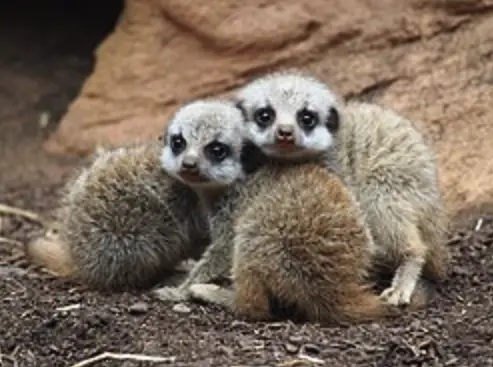
In the fading light of a Kalahari dusk, as a mob retreats to its burrow, one subordinate lingers, eyes fixed on the alpha’s swelling belly.
Will tonight bring another raid, or a fleeting alliance? The desert holds its breath, waiting for the next move in this endless game of thrones.
Top 10 mammals most likely to kill their own kind
- Meerkat
- Red-tailed monkey
- Blue monkey
- Red-fronted lemur
- Mongoose lemur
- Black lemur
- New Zealand sea lion
- Long-tailed marmot
- Lion
- Banded mongoose
Apart from the violence of lion and Grey wolf, other famous mammals like Baboon, puma, snow leopard, African wild dog and brown bear are also in the list which records about 10 % of their deaths occurs due to killings of their own kind.
